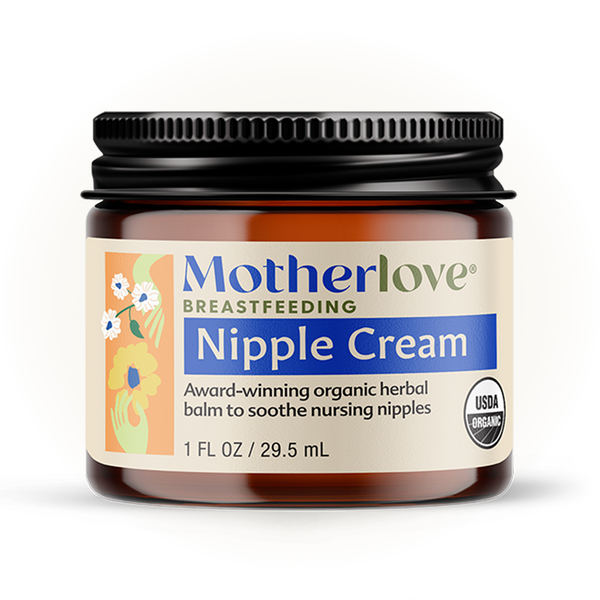Written by: Allison, RN, IBCLC
We’ve all seen pictures of mothers comfortably holding their perfectly latched babies in their arms. But many moms who’ve breastfed can tell you that latching your baby in the early days and weeks looks nothing like these pictures. Some moms have this picture-perfect experience early on, but for most of us, breastfeeding, in the beginning, is anything but natural. It can be an awkward experience just holding a new baby for the first time, let alone trying to breastfeed. But eventually, most mothers will get to the point of a more natural breastfeeding experience with the practice, patience, and support.
TIPS TO GET YOUR BABY LATCHED
1. Find a Comfortable Position
Before preparing your baby to latch, it’s important to find a comfortable position for you and your baby. Pillows come in handy for supporting your back during breastfeeding and for supporting the arm that will be holding your baby. If you’ve had a vaginal delivery, try to sit up straight with a pillow behind your back and another on your lap. If you’ve had a Cesarean birth, it may be more comfortable to recline slightly with one pillow behind you and another by your side. That way, your baby is not lying across your abdominal incision. For more tips on breastfeeding after a Cesarean, click here. Most hospital beds are adjustable, making it easy to find a comfortable position. At home, a rocking chair or recliner may work best with a small stool to rest your feet on.
To learn more about different breastfeeding positions, click here to view our Resource Page.
2. Prepare Your Baby to Latch
Your baby will latch best when they are just starting to wake up and have a quiet and alert temperament. Watch for feeding cues such as licking the lips or bringing the hand to the mouth as signs that your baby is hungry. Crying is often a late sign of hunger, and it can be more difficult to latch your baby when they are in a fussy state. Before you latch your baby, it’s also an excellent time to check their diaper. That way, your baby is clean and comfortable before you start breastfeeding. Diaper changes are a great job for partners to do while you are getting comfortable and preparing to nurse. Babies can be quite sleepy in the early days of breastfeeding, and it can help to undress them, leaving just their diaper on and holding their bare chest against your bare chest. Skin-to-skin contact helps your baby know that it’s time to breastfeed. Placing a blanket over your baby during breastfeeding will ensure they don’t get too cold.
3. Prepare Your Breasts for Nursing
Once you’ve got your baby into a comfortable nursing position, it helps to prepare your breasts to get milk following. This process is called hand expression and involves squeezing out drops of milk from your breast to get your baby interested in latching. With the hand that’s not holding your baby, gently place your free hand in the shape of a C on your breast. Gently compress your hand toward your nipple for a few minutes until you see milk starting to flow. When you see a few drops of milk, this is the optimal time to latch your baby. In the beginning, you will only see a small amount of colostrum, the thick, yellowish milk made during pregnancy. In a few days, when your milk arrives, you will start to see more plentiful, white-colored milk that flows more freely.
Some moms aren’t able to hand express, for whatever reason. It is not necessary to do this before nursing, although it can help if you’re having a hard time getting baby interested. For tips on hand expression, click here.
4. Latch Your Baby
Once you see the milk flowing, you’ll want to bring your baby to your breast to help them latch on. Start by pointing your nipple right across from your baby’s nose, with your baby’s lower lip on the bottom of your areola. Your baby will start to lick the drops of milk on your nipple and eventually open their mouth wide. When your baby’s mouth is open wide like a big yawn, quickly bring your baby up and over your nipple so that their mouth is covering most of your areola. It’s okay if you see some of the top of your areola showing when your baby is latched. You should feel a strong tugging on your nipple that is not painful. If you feel pain or a pinching sensation, it usually means your baby is not latched on deep enough (meaning their mouth isn’t open wide enough). You’ll want to gently release your baby from your breast and relatch.
Some tricks to get your baby to open their mouth wide are:
- Hold your nipple just under their nose so that they can smell the milk. Smelling milk can stimulate the gape response, and you can then bring them in to latch.
- Rub your nipple or finger over baby’s upper lip. This sensation can also stimulate the gape response.
- Stroke baby’s cheek with your finger. This can help them remember that they are hungry and it’s time to eat.
If you aren’t able to get baby to open their mouth widely, that’s okay! Sneak a finger in between your breast and their lips to break the suction and try again. It can take a few tries, just remember that you are building long-term habits, and that can take plenty of practice.
Sometimes, baby does get their mouth open wide, but their lips are tucked in, and their suction may not be strong enough. You can help flange them out by sticking your pinky finger under their lips to pull them out. This doesn’t disrupt the whole latch, and often baby will keep nursing.
If you feel like baby just isn’t able to latch, try a different hold. For example, some babies will latch perfectly fine on one side when held in the cradle hold but need to help in the football hold to latch on the other side. This may only be necessary sometimes, or for the newborn period. Once baby is a pro at nursing, you may find that positions that didn’t work before will be just fine.
5. Have Patience
Whether you’ve given birth in a hospital, birthing center, or home, take advantage of the help you have from your birth team in the early days of breastfeeding. It takes a lot of trial and error to figure out how you and your baby will be most comfortable nursing together, and it doesn’t always feel so natural in the beginning. With time and patience, you will be able to have an easy and natural breastfeeding experience with the ability to nurse just about anywhere. While it can be stressful initially, breastfeeding overall should be a pleasant experience for you and a way of bonding with your baby. Don’t be afraid to ask for help or call a lactation consultant if you need some more direction. Be sure to check out more Tips and Tricks on our Breastfeeding Resource Page, too.





